by Winding Pathways | Feb 28, 2016 | (Sub)Urban Homesteading, Garden/Yard, Nature
By Jacqueline Hull, contributor
Last fall, approaching my three-quarters of a century mark in age, I decided in my gardening life to experiment on a different level with growing vegetables. Winter was quickly on its way with its sharp spears of cold. Some seedlings, specifically beets, carrots and lettuce, would meet their untimely demise if I didn’t intervene.
So I rummaged through my assortment of planters finding an elongated one with a couple of colorful pots. I was in business! So out to the garden I traipsed with trowel in hand and a box to rescue a number of seedlings.
After retrieving the seedlings, I potted and set them in a south window where they have thrived. I even arranged some beet, carrot and lettuce seedlings as if for a floral arrangement – really pretty with various colors and types of leaves. Since then I’ve had many beet leaves in salads or mixed with steamed chard. The carrots are beautiful with their feathery spears. The lettuce keeps flourishing. One beet growing in a red pot became my centerpiece on the kitchen table over the holidays. It is gorgeous with cranberry red veins coursing through the deep green leaves.
Mission accomplished. I’ve had fun. Enjoyed great winter eats and spring is on the horizon!
Editor’s note: Following are some links to indoor winter gardening to keep for planning next fall. Washington Post. I particularly like the last sentences of this article. Vegetable Gardening Online features a vegetable tree, herbs and counter top gardens.
by Winding Pathways | Feb 28, 2016 | (Sub)Urban Homesteading, Chickens, Energy Efficiency, Geology/Weather, Nature
How ironic that many homeowners don’t harvest the rain that falls on their property, yet they buy water to irrigate their lawn and garden. Harvest free water by using rain barrels and rain gardens.
RAIN BARRELS
Since ancient times families have captured rain falling on their roof to use for irrigation. It worked thousands of years ago and still works today. A rain barrel is a large container positioned under a gutter downspout to catch and hold water for later use. They can be homemade but most people prefer buying one. Hundreds of models are on the market and range from simple and inexpensive ones to elaborately designed barrels that are practical and decorative. We purchased ours from Rainwater Solutions and have placed six under the downspouts of two buildings. The free water irrigates our vegetable garden and provides water for our small flock of chickens. For more information see the Winding Pathways blog of April 2015 or check http://www.rainwatersolutions.com/
RAIN GARDENS
Rain gardens are more permanent than barrels. Like the barrels they range from the simple to the elaborate. Rain gardens aren’t used to harvest water for irrigation but channel roof runoff into the ground rather than into storm sewers.
Our rain garden is simple and cost nothing to create. We dug a shallow basin in the lawn about the size of a bath tub where our downspout discharges gutter water. During a light to moderate rain our rain garden absorbs all the roof water and puts it back into the ground where it moistens roots and eventually helps recharge the aquafer. During a fierce thunderstorm it overflows a little but we channel that to the lawn. Between the garden and lawn all the rain falling on our roof stays on our property, benefiting our plants and not creating flooding downhill.
The Indian Creek Nature Center and Linn County Master Gardeners will hold workshops in March 2016 to help participants learn how to make their own rain garden. Other nature centers, master gardener and Extension Offices hold similar workshops in many locations across the country. Books and websites are available to help homeowners plan their rain garden. One of our favorite information sources is the Low Impact Development Center.
Besides harvesting water and reducing downstream flooding there’s another benefit of having a rain garden. Flowering plants that require wet soil flourish in rain gardens but can’t live in nearby dry soil.
by Winding Pathways | Feb 5, 2016 | Children/Play, Geology/Weather, Nature, Wonderment
Kids enthusiasm about playing in the snow is evident with snowmen around town, tracks across yards, piles of wet boots and mittens and gay laughter ringing through the town. Two children share their reasons they love to “Go Outside and Play!”
-

-
Musher Devany Souza on her magical “first snow” trip to Alaska
-
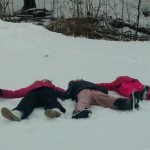
-
Part of the fun of snow is making snow angels.
-

-
An intrepid sledder walks back up the hill.
-
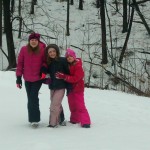
-
Smiles in the snow!
-

-
Drying out the clothes
-Savannah. “I like to play outside when it’s snowing because we can do several different things. We can throw snowballs at each other. We can make big snow forts and hide in them. We also slide down our icy slide so we can go extra fast. So all together, we play in the snow whenever we get the chance.”
-Breanna. “When it’s snowing I like to go outside. The reason I like to go outside is because I like to go
sledding really fast down a hill. I also like to build
snowmen while my brother and sister go find accessories. I like to find cool
foot prints in the snow. And I think it is fun to throw snowballs at my brother and sisters. And that is why I like to go outside.”
by Winding Pathways | Feb 2, 2016 | (Sub)Urban Homesteading, Foraging, Nature, Travel/Columns, Trees/Shrubs
Late this winter and early spring dozens of maple syrup festivals will shake the winter blahs. From the Midwest to the Atlantic and from the mid-South to Canada folks will be getting outside as days lengthen and temperatures warm to welcome the season’s first harvest.
Most festivals feature tree tapping and boiling demonstrations as well as delicious pancakes topped with local maple syrup.
-

-
For over 40 years, the Indian Creek Nature Center has hosted families at their two day festival.
-
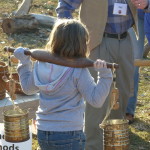
-
Children love to re-live harvesting methods.
-
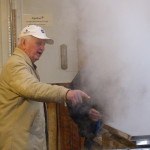
-
Explaining the evaporation process.
-
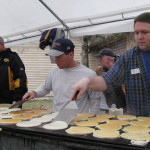
-
Volunteers arrive early at Indian Creek Nature Center’s Festival to serve hungry families.
-
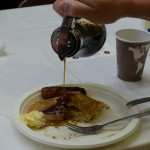
-
Just enough to finish the pancakes and sausage.
-

-
Sweet Surrender!
There’s likely a festival near your home. Just type into your search engine MAPLE SYRUP FESTIVAL IN (your state or province) and details will pop up. Here are just a few:
Indian Creek Nature Center Maple Syrup Festival. Cedar Rapids, Iowa
Indiana National Maple Fest. Brown County, Indiana
Mt. Rogers Maple Syrup Festival. Virginia
Elmira Maple Syrup Festival. Elmira, Ontario, Canada
by Winding Pathways | Feb 1, 2016 | (Sub)Urban Homesteading, Foraging, Nature, Trees/Shrubs
Preparing for the season’s first food harvest is a fun way to spend a few hours during winter’s deep freeze. Cornell University Cooperative and New York’s DNR have an excellent PDF “Maple Syrup Production for the Beginner.” Wikipedia features a comprehensive overview of syruping.
Trees of many maple species will flow sweet sap as soon as daytime temperatures rise into the high 30s while nights drop below the freezing point. That can happen in early February down South and six weeks later in Canada.
Syruping is fun, educational and a wonderful activity to share with children. It can be done far beyond the classic syruping regions of New England, Canada and the Lake States. We’ve been in touch with families from North Dakota to North Carolina who make maple syrup. We’ve made gallons in Iowa. All it takes is a tree or two of any maple species, the right weather and simple tools. When done properly, it doesn’t hurt the tree. Silver, sugar, black, and red maples all run sweet sap. So does the box elder, which is a true maple.
You’ll find past blogs on Winding Pathways that show how to make simple syruping equipment. Type maple syruping in the search box at the bottom of the screen or click on this link. Almost everyone already has everything needed to make small quantities of syrup, but it’s easier and a bit more sanitary to use manufactured equipment.
Many companies sell syruping equipment, but most are geared to supply large commercial operations. Tap My Trees is different. They sell easy-to-use equipment to folks wanting to tap a few backyard trees. Their website also includes helpful information on how to tap trees, collect sap, and boil it into syrup. Check it out!
-
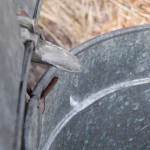
-
Clear sap dripping into the bucket.
-
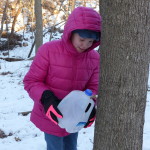
-
A clean milk jug makes a simple “bucket” to collect sap.
-
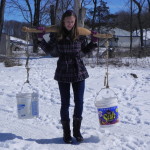
-
Carrying “modern buckets” on a yoke.
-
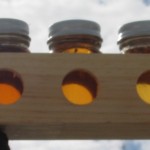
-
Maple Syrup’s taste is stronger with a deeper amber.
-
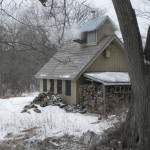
-
A traditional sugar shack
-
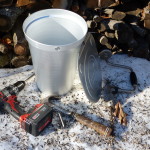
-
Modern equipment make backyard syruping easy and pleasurable.
by Winding Pathways | Jan 30, 2016 | Nature, Trees/Shrubs

Catalpas are tough trees that thrive in hostile environments. Their beautiful blooms attract pollinators.
We recently invited our neighbors to Winding Pathways for an evening of conversation. It was early winter and talk turned to trees.
“We have an odd tree growing in our yard. I have no idea what it is, but it has bit heart shaped leaves and later in the summer long beans dangle down from it,” said Patty a neighbor from down the street.
Her description was perfect. It was a Northern Catalpa. No other tree matches her observations.
Winter is a wonderful time to study trees. In midsummer their branch structure and twigs are usually invisible beneath leafy clothing. Not so in winter when buds, twigs, trunk, and branches can be easily seen. Often they yield clues revealing its species.
One of our favorite tree finding tools is on the Website of the National Arbor Day Foundation. Click on the “tree” tab and a simple identification guide pops up like magic on the computer screen. The Arbor Day Foundation also sells dozens of tree species at reasonable prices and a visit to Arbor Day farm in Nebraska City, Nebraska is memorable. It’s just south of Omaha and is where J. Sterling Morton founded Arbor Day.


















